Afghanistan’s flag is a dynamic emblem of the nation’s evolving story, reflecting its turbulent history and the resilience of its people. Each design iteration captures a distinct chapter in the country’s journey, with the latest change in 2021 underlining significant political shifts.
Afghanistan Flag
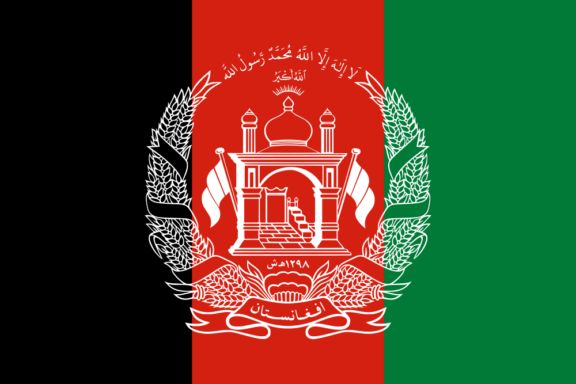
Afghanistan’s flag until 2021 displayed a vertical black, red, and green tricolor with a central emblem featuring a mosque and the inscription “Allahu Akbar.” This emblem symbolized the nation’s historical and cultural identity, referencing Afghanistan’s independence in 1298 of the Islamic calendar.
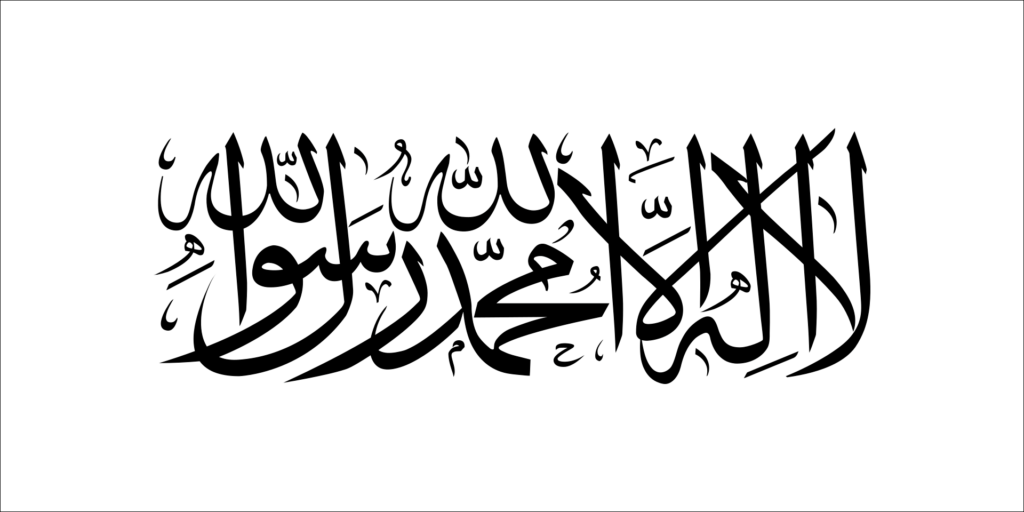
Following the Taliban’s rise in August 2021, Afghanistan adopted a new flag. It features a plain white field with the black Shahada, representing the Taliban’s focus on purity of faith and governance.
This more straightforward design indicates a stark ideological shift under Taliban rule. Variants include the “Islamic Emirate of Afghanistan” in Pashto below the Shahada and a less common Dari version.
Afghanistan Flag: Color Palette
Post-Taliban Colors
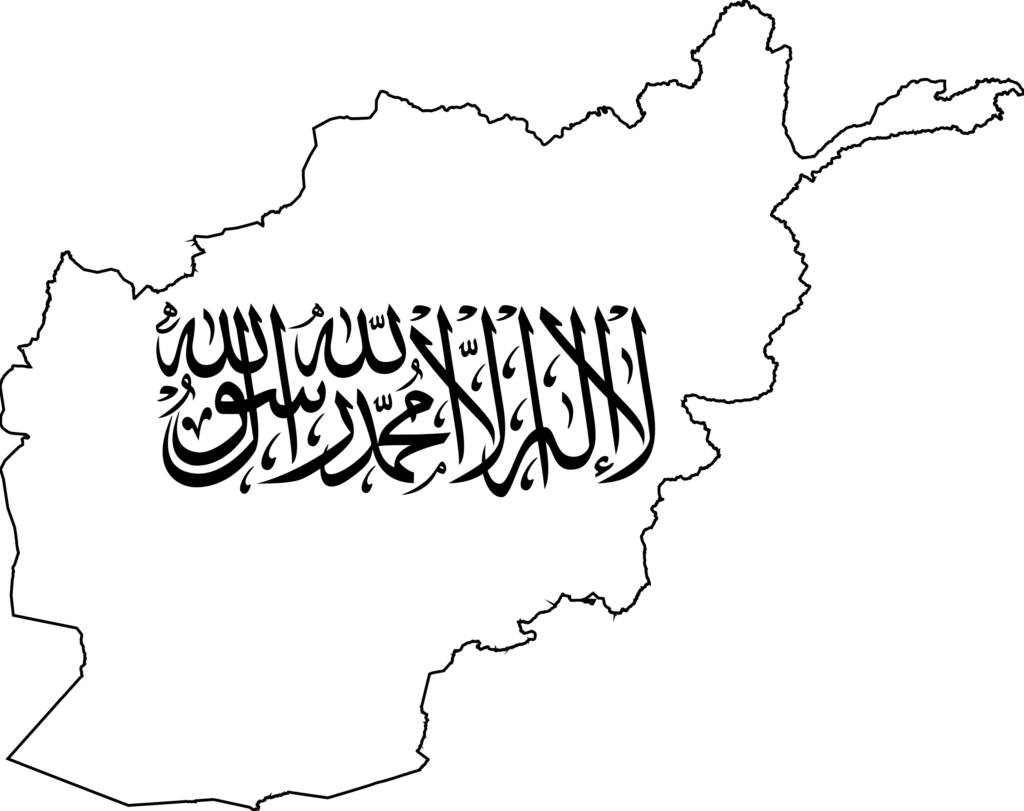
Afghanistan Flag Emoji: 🇦🇫
The color palettes of Afghanistan’s flags, both the historical tricolor and the current white design, serve as a canvas reflecting the nation’s changing ethos.
The earlier flag’s trio of colors and the current flag’s minimalist scheme carry their symbolic weight. This section will explore the specific implications of these colors, highlighting their significance in Afghanistan’s rich tapestry of history and identity.
Meaning of Each Color
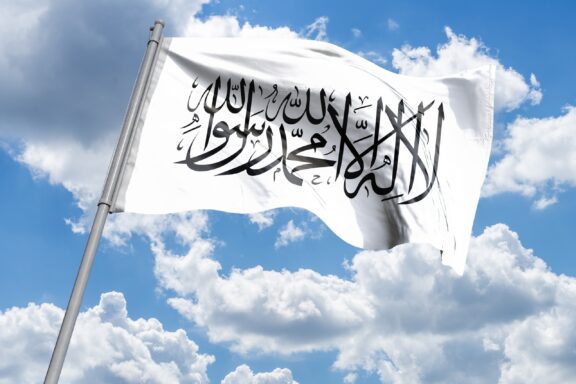
Black
The black stripe in Afghanistan’s tricolor flag historically represented the nation’s tumultuous past. It symbolized the dark periods of foreign intervention and control, reflecting the resilience and endurance of the Afghan people through challenging times.
Red
The red stripe was emblematic of the valor and sacrifice of the Afghan people. It signified the bloodshed in the struggles for independence and the numerous conflicts that have marked Afghanistan’s history, embodying the nation’s spirit and determination for freedom.
Green
Green, a traditional color in Islamic symbolism, represents hope, prosperity, and the Islamic faith in Afghanistan. This color also echoed the country’s aspirations for a prosperous future and its rich natural landscapes.
Post-Taliban
White
The current flag, adopted by the Taliban in 2021, is white with black script. The white background represents the purity of faith and governance, per the Taliban’s interpretation.
This significant change from the colorful past to a monochromatic present reflects a shift in focus and ideology, emphasizing religious devotion and a more austere governance approach.
Black (Inscription)
The black script on Afghanistan’s current flag displays the Shahada, the central Islamic creed stating, “There is no god but Allah; Muhammad is the messenger of Allah.” This declaration is a core tenet of Islamic faith, signifying the nation’s adherence to Islamic principles and the Taliban’s religious-centric governance.
Afghanistan Coat of Arms
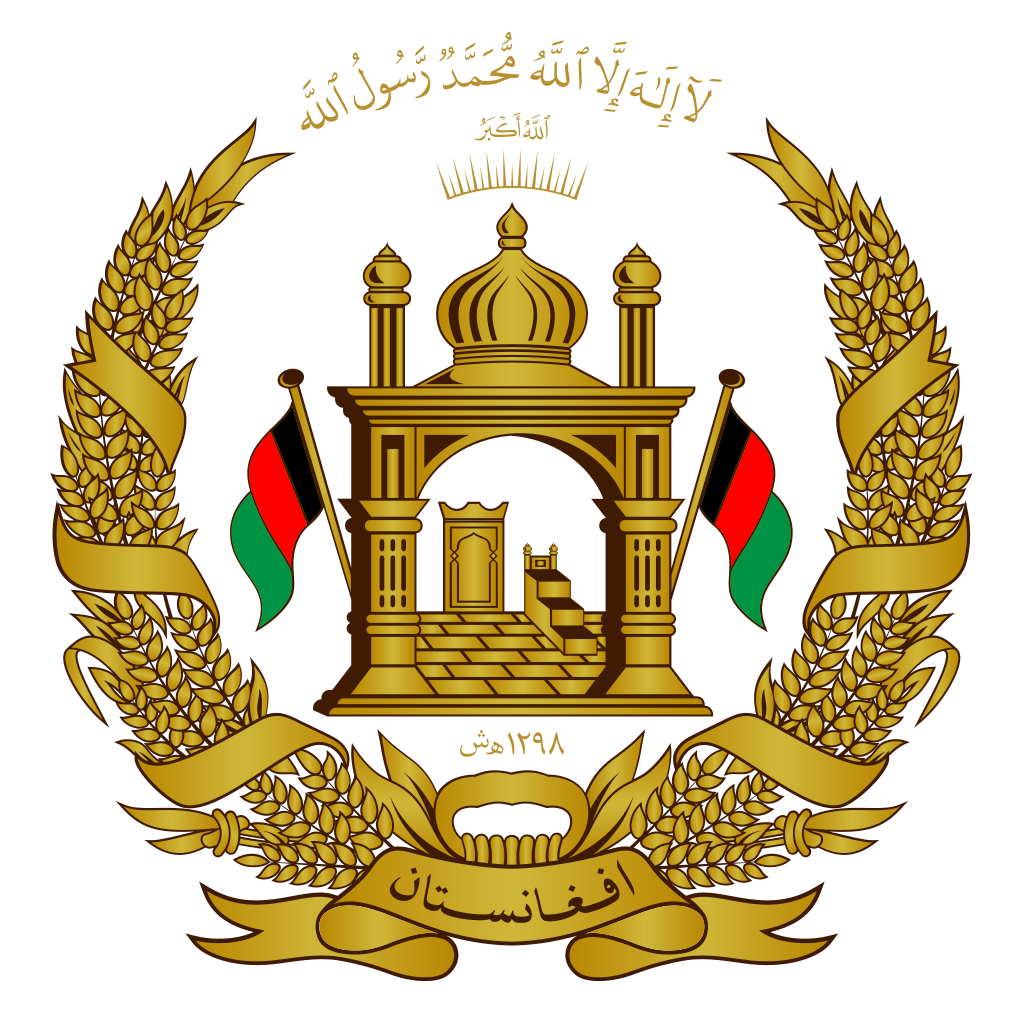
Afghanistan’s former coat of arms was a rich embodiment of the nation’s historical independence, Islamic traditions, and agricultural heritage. It represented the country’s journey towards progress and peace, underscored by its Islamic identity and the milestone of liberation from foreign rule.
With the Taliban’s ascension in 2021, the coat of arms underwent a transition, aligning with the regime’s austere and fundamentalist views. The new emblem symbolizes a shift towards a governance model deeply rooted in Islamic principles, reflecting the Taliban’s religious and national identity interpretation.
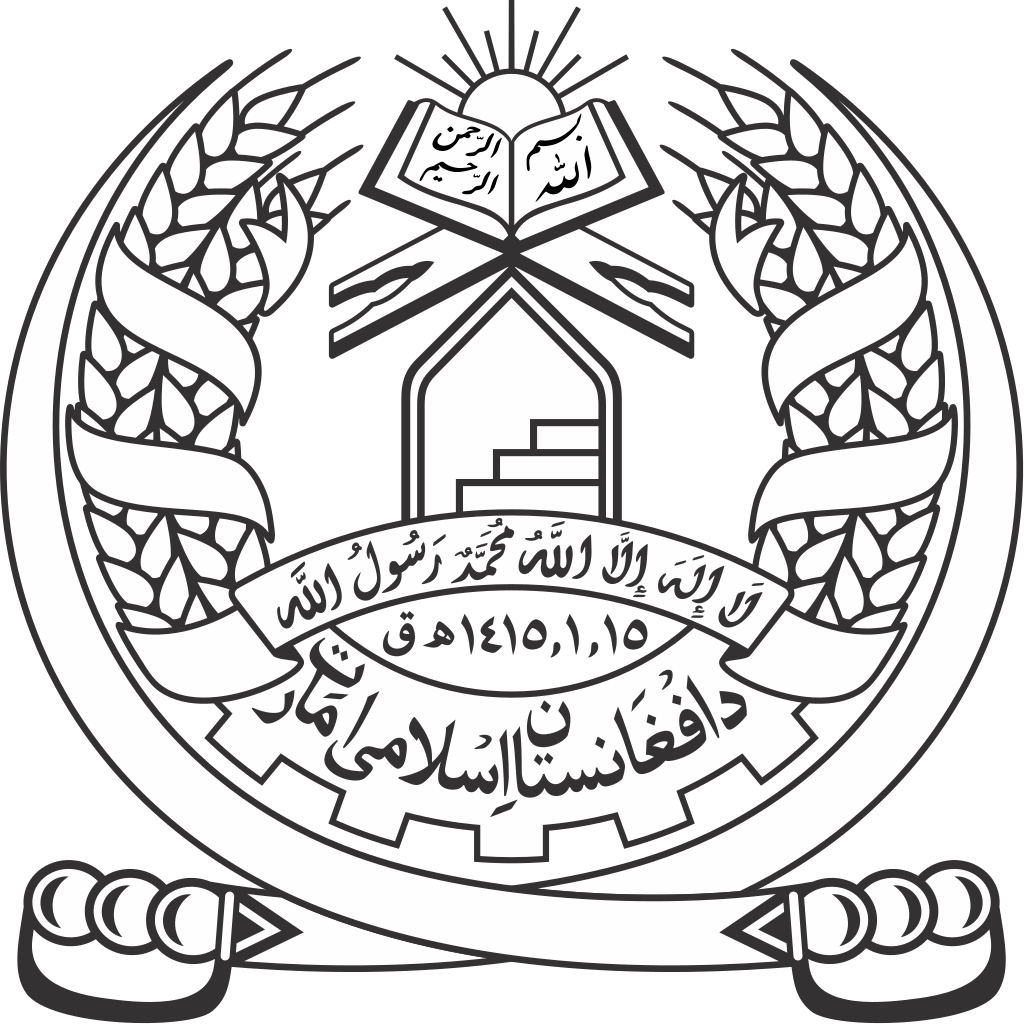
Overall, the evolution of Afghanistan’s coat of arms from a detailed portrayal of diverse cultural elements to a simpler, religion-focused symbol mirrors the nation’s shifting political narrative and the changing priorities of its leadership.
Historical Evolution and the Meaning Behind Changes
Afghanistan’s flag evolution mirrors its changing political and societal landscape. Initially simple, reflecting the nation’s nascent statehood challenges, the flag’s evolution to the black, red, and green tricolor in the 20th century marked a more profound national identity.
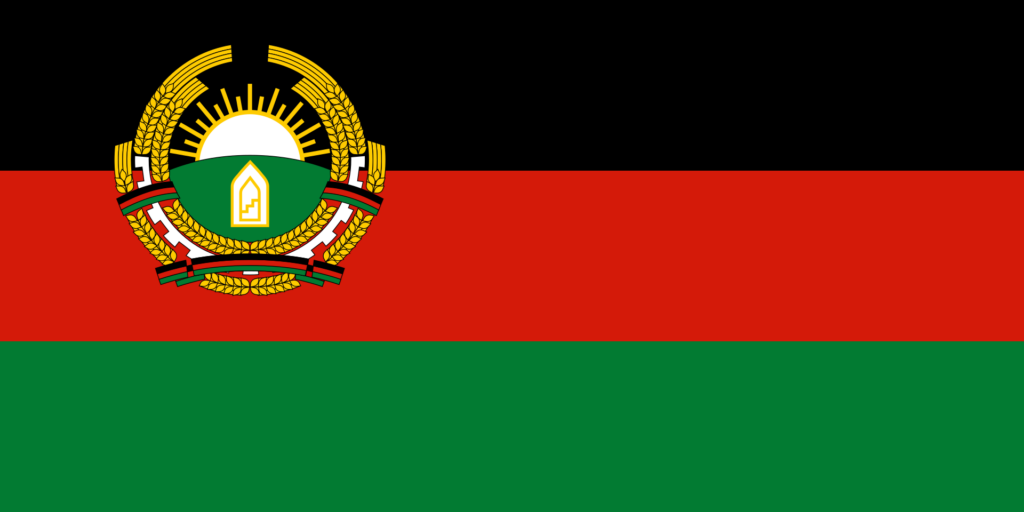
The latter part of the 20th century brought more radical changes. The rise of the Communist regime saw the flag adopt a predominantly red hue, symbolizing a new political direction, followed by the Civil War era, where the flag’s identity fragmented.
The Taliban’s initial rule introduced a stark white flag with Islamic text, a departure from previous designs, emphasizing a stringent religious interpretation. Post-2001, returning to the tricolor design was a nod to a more inclusive national identity, embracing broader historical and cultural narratives.
However, with the Taliban’s return to power in 2021, the flag reverted to the white and black design, signaling a return to their distinct ideological perspective. This ongoing fluctuation of the flag’s design captures the essence of Afghanistan’s continual quest to define its national character in the face of relentless change.
Overall Symbolic Meaning of the Flag
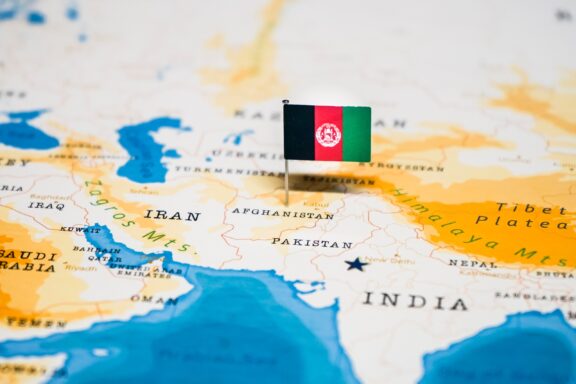
Afghanistan’s current flag symbolizes a significant ideological shift, emphasizing a unified national identity centered around Islamic principles. Its minimalist design reflects the Taliban’s focus on religious governance, marking a departure from the nation’s previously diverse symbolic narrative.
Similar Flags to the Flag of Afghanistan
Several national flags share notable similarities with Afghanistan’s, especially in their Islamic symbolism. Here are the top flags that echo Afghanistan’s design:
Saudi Arabia
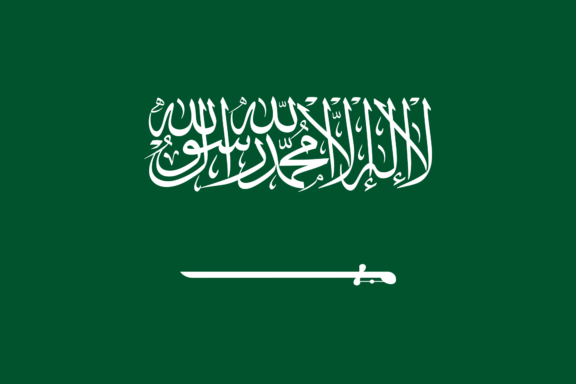
Saudi Arabia’s flag has a direct resemblance in terms of Islamic symbolism. It features the Shahada written in white Arabic script, similar to Afghanistan’s flag, but set against a green background. Both flags prominently display the Islamic declaration of faith, signifying the central role of Islam in their national identities.
This shared element highlights a common religious heritage and the importance of Islamic principles in both nations’ governance and cultural identity.
Iraq
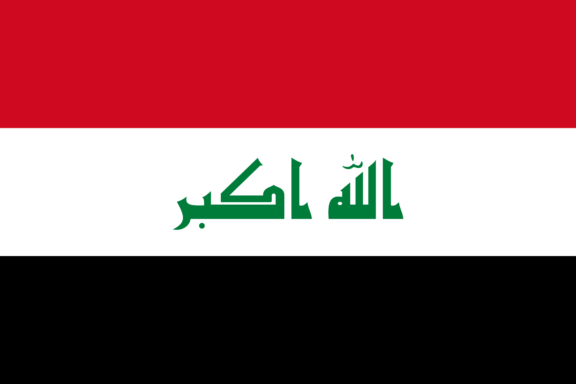
The flag of Iraq also incorporates Islamic references, albeit in a different style. It features three horizontal stripes of red, white, and black, with the Takbir (“Allahu Akbar”) in green script centered in the white stripe.
While the color scheme and design differ from Afghanistan’s flag, using a critical Islamic phrase is common. This reflects a shared emphasis on Islamic identity and faith in the symbolism of their national flags.
Conclusion
Afghanistan’s flag symbolizes the nation’s historical journey and Islamic solid faith, especially in its current form. It is distinct among global flags and reflects a deep commitment to religious principles. For Afghan citizens, this flag is more than a symbol; it represents their identity, struggles, and resilience.
Image Sources and Copyright Information
- Flag of Afghanistan Against Cloudy Sky: © Svet foto/Shutterstock
- Afghanistan Flag Pin on Map: © hyotographics/Shutterstock